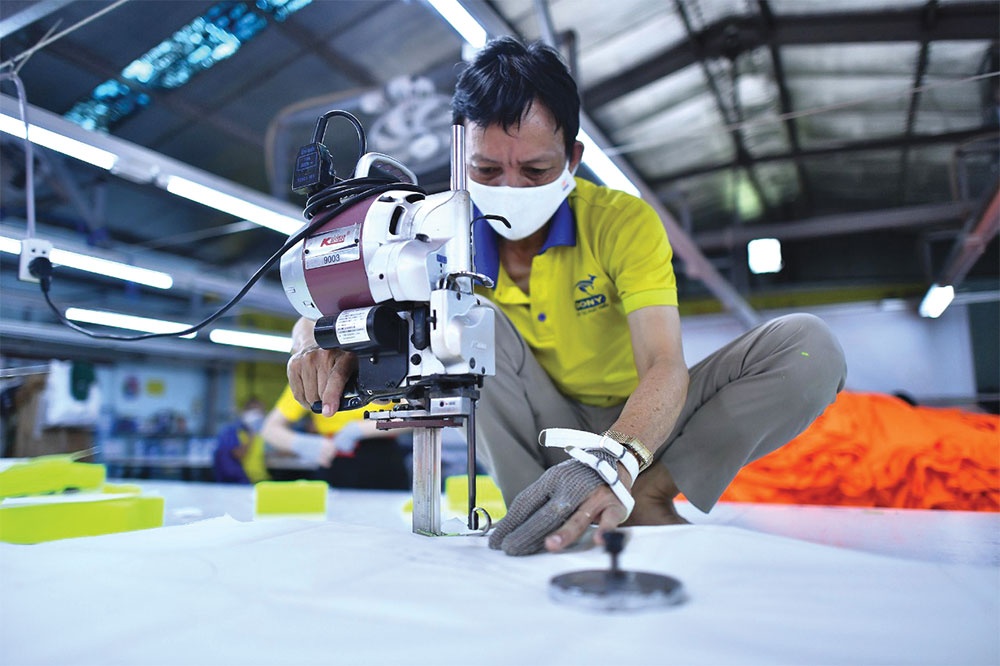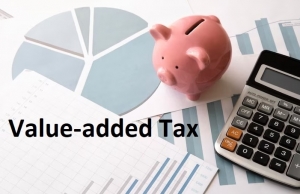Businesses and households hold onto VAT cutback hopes
In addition to a reduction of 2 per cent, Minister Phoc said VAT should be applied to all goods and services to enhance the efficiency and implementation of the policy and accelerate consumption nationwide. Currently, VAT is only applied to a limited range of goods and services.
 |
| Businesses and households hold onto VAT cutback hopes, illustration photo |
Despite applying numerous support on taxes and fees, the state budget revenue has reported a decrease since the end of 2022.
In Q1 of 2023, state budget revenues only reached 30.9 per cent of estimates, with revenue from exports and imports decreasing by 16.4 per cent on-year.
“Therefore, in addition to policies on reducing environmental protection tax for petroleum products, reducing land rent, and reducing fees and charges, the VAT reduction is necessary to support people and businesses,” said the minister.
Individuals and companies are hoping for a 2 per cent cut, which will directly contribute to reducing the price of goods, and partly reducing business costs.
Pham Hien My in Hanoi’s Thanh Xuan district said that her family often spent about VND10 million ($435) a month on fresh food, drinks, and other daily necessities, as well as paying 10 per cent VAT on supermarket goods.
“Since the end of 2022, the economy has been struggling with many woes, and my company has cut employee pay,” said My. “If the tax is cut, we will have more money for our daily expenses.”
Nguyen Trung Thanh, director of a bus company on the Thanh Hoa - Hanoi route, said that if VAT is reduced, the costs for the company would drop sharply.
“A 45-seat passenger bus often spends about VND600,000 ($26) on highway fees per month. With the VAT reduction, the costs of transport will be cheaper, and ticket prices could be lowered,” said Thanh.
Many associations also support the proposal to lower VAT.
The Food and Foodstuff Association of Ho Chi Minh City (FFA) said that since the end of 2022, businesses have faced many difficulties when interest rates raised rapidly, raw material prices and transport costs soared sharply, and businesses had their orders cut.
If the tax is lowered in the next six months, the FFA said the total tax payment will decrease by $1.5 billion. Last year, the total VAT reduction bailout was about $1.9 billion.
In addition to VAT, the Vietnam Chamber of Commerce and Industry (VCCI) has proposed reducing tax for all goods and services, instead of only some.
“Reducing taxes on some items makes tax declaration and payment extremely complicated. Enterprises, tax, and customs authorities are concerned that incorrect identification of goods will lead to the risk of disciplinary action later. Therefore, a tax reduction across all goods and services is reasonable,” said a VCCI representative.
Economist To Trung Thanh from National Economic University said that the VAT reduction would make goods cheaper, directly impacting buyers and stimulating purchasing power.
“Thanks to this policy, businesses can release inventories, recover capital, and create new production cycles, while workers can keep their jobs,” said Thanh.
However, Truong Tien Dung, vice chairman of the FFA, said that unemployment is a more urgent problem. “If a labourer is unemployed, they cannot buy anything, regardless of the discount. Also, the government needs to accelerate a 10 per cent VAT refund for businesses and interest rate reduction on bank loans, so businesses can easily access capital to maintain and expand production, and create jobs.”
Director of the Ho Chi Minh City Department of Finance Le Duy Minh said that if the 2 per cent VAT reduction only applies to businesses in services, like in 2022, about $435 million would be supported for businesses in 2023.
“However, if applied to all fields subject to VAT, the support will be considerable, and in the city it could be up to $652 million,” said Minh.
At a government meeting in April, Prime Minister Pham Minh Chinh highlighted solutions to stimulate consumer demand, especially the domestic market, tax and discounts, accelerating disbursement of public capital, and creating stronger conditions to entice private capital, promote trade, and expand new markets.
 | 2 per cent reduction in VAT to boost aggregate demand The 2 per cent reduction in VAT is hoped to affect aggregate demand significantly, effectively doping the economy amidst the current slowdown. |
 | Government proposes National Assembly consider 2 per cent reduction in VAT in coming agenda The Government has proposed the National Assembly (NA) to consider a 2 per cent reduction in the value-added tax (VAT) on goods and services subject to a 10 per cent VAT during its coming meeting stated to start on May 22. |
What the stars mean:
★ Poor ★ ★ Promising ★★★ Good ★★★★ Very good ★★★★★ Exceptional
 Tag:
Tag:
Related Contents
Latest News
More News
- Tax sector wraps up 2025 and sets priorities for next year (December 25, 2025 | 14:00)
- A tipping point for digital and hybrid wealth management in Vietnam (December 23, 2025 | 13:33)
- $250 million deal targets women-owned SMEs, sustainable agriculture (December 22, 2025 | 17:40)
- Stock market posts resilient 2025 performance (December 19, 2025 | 18:17)
- Citi Vietnam receives 2025 AmCham CSR recognition (December 19, 2025 | 16:35)
- As global green supply chain reshapes, will Vietnam be left behind? (December 19, 2025 | 08:00)
- Banks gear up for massive capital increases (December 18, 2025 | 17:04)
- Securing capital and efficiency for Vietnam’s 2026-2030 growth ambitions (December 17, 2025 | 10:00)
- Energy sector in need of blended finance mechanisms (December 17, 2025 | 09:00)
- Vietnam still has room to mobilise capital for sustainable growth (December 17, 2025 | 08:57)























 Mobile Version
Mobile Version